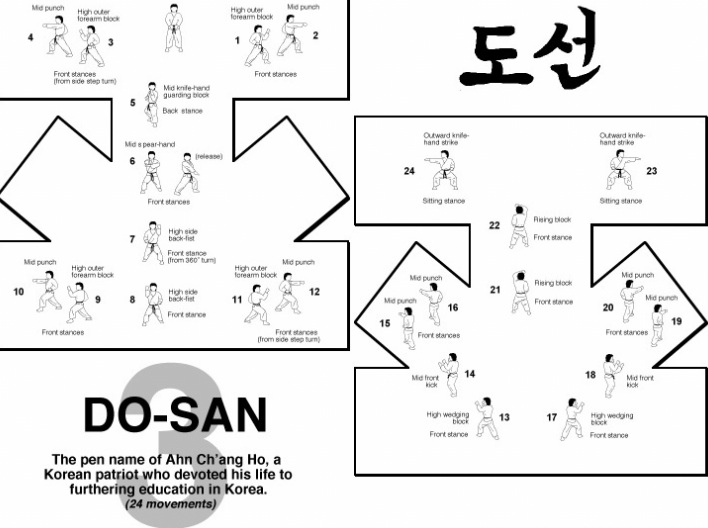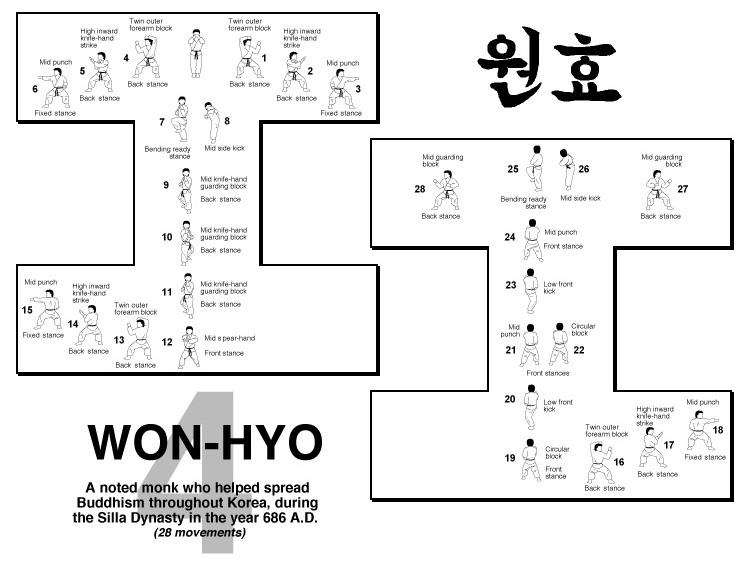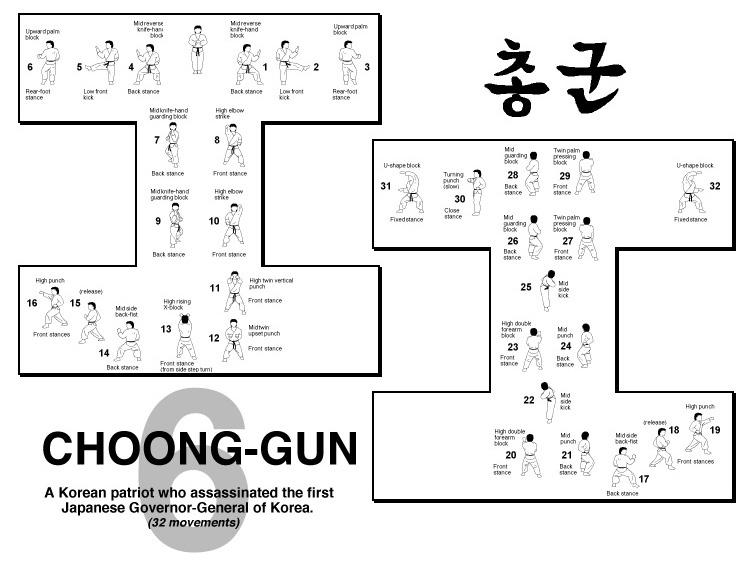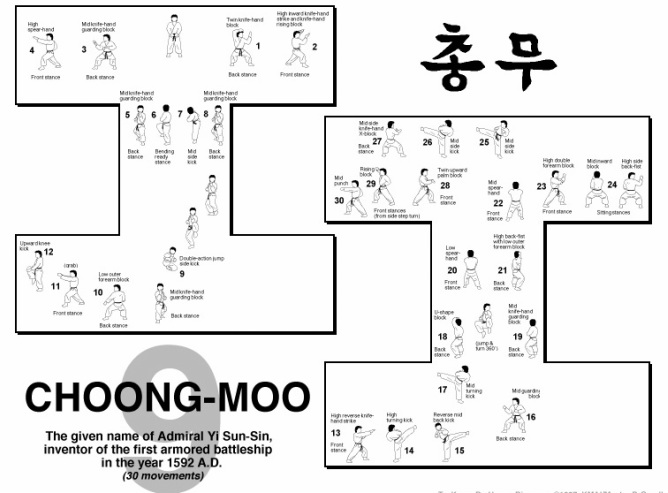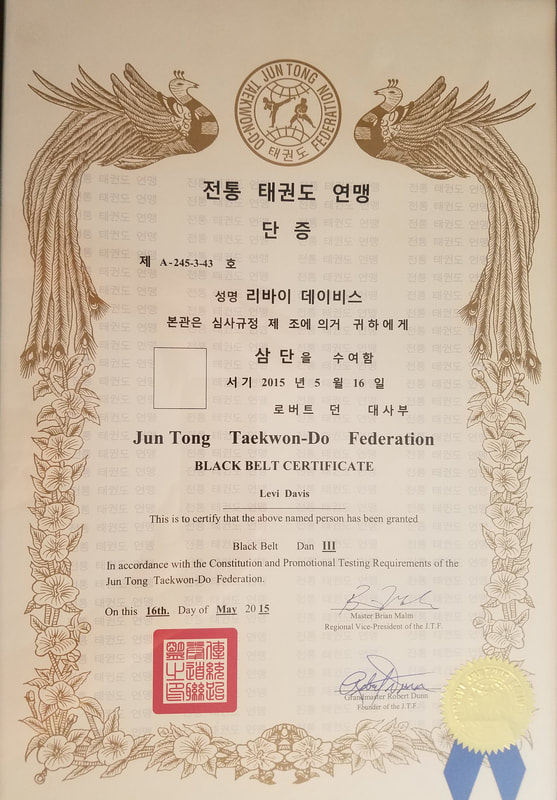Southern Dragon Taekwon-do Curriculum
|
The following are principles that we follow as a tribute to our Taekwon-Do
predecessors: Always seek truth and practice it. Promote the highest moral character through training in Taekwon-Do. Respect and obey your parents, teachers, and seniors. Love your country and contribute to your community. Develop both confidence and humility. Do your best to better yourself intellectually. Do not hesitate to sacrifice yourself for what is right. Do your best to develop Taekwon-Do. Develop endurance, and be calm and humble in mind and spirit. Remember that the ultimate purpose of Taekwon-Do is to promote both physical and mental health |
At Southern Dragon Taekwon-do we teach complete and comprehensive martial art. This curriculum is based on :
This curriculum is trained and honed through both our daily training but also through our weekly themes to spotlight specific training points in the system, these include but are not limited to:
"Here I leave Taekwon-Do for mankind as a trace of man of the late 20th century. The 24 patterns represent 24 hours, one day, or all my life" The 9 points to be observed while performing patterns according to General Choi Hong Hi:
Information Cirriculum:
We are affiliated with the Jun Tong Taekwondo Federation:
www.juntong-taekwondo.com/ www.facebook.com/JunTongTKD/ Chon-Ji Tul
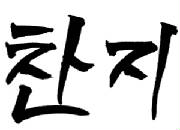
(Pronounced: "Chon Gee") is the first Chang Hon (Blue Cottage Style) and International Taekwon-Do Federation pattern learned at Gold or Yellow stripe belt level.
Movements: 19 Belt: White belt with Yellow stripe (9th Kup) It has 19 movements with a diagram of a cross (or plus sign) and literally Chon-Ji means "heaven and earth" or "heaven-the-earth", which is interpreted as the creation of the world or the beginning of human history. It is therefore the initial pattern performed by a beginner during their creation and entrance into the world of Taekwon-Do. The two words combined together, however can have slightly different meanings, Lake Chon-Ji is the ‘Heavenly’ Lake, located in a crater on Paektu-San (White Headed Mountain also Ever-White Mountain) located on the border between China and North Korea, which was the first residency of the legendary Dan-Gun before he established his capital at Asadal (now Pyongyang) in 2333 B.C. Dan-Gun Tul
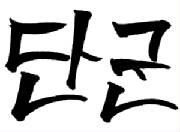
(Pronounced: "Tan Gun") Dan-Gun is named after the Holy Dan Gun, the legendary founder of Korea in the year 2333 B.C..
Movements: 21 Belt: Yellow Belt (8th Kup) Do-San Tul

(Pronounced: "To San") Do-San is the pseudonym of the patriot Ahn Chang-Ho (1876-1938). The 24 movements represent his entire life, which he devoted to furthering the education of Korea and to its independence movement.
Movements: 24 Belt: Yellow Belt with Green stripe (7th Kup) Won-Hyo Tul

(Pronounced: "Won Yo") WON-HYO was the noted monk who introduced Buddhism to the Silla Dynasty in the year of 686 A.D.
Movements: 28 Belt: Green Belt (6th Kup) Yul Gok Tul

(Pronounced: "Yule Gok") YUL-GOK is the pseudonym of a great philosopher and scholar Yi l (1536-1584) nicknamed the "Confucius of Korea" The 38 movements of this pattern refer to his birthplace on 38 latitude and the diagram represents "scholar".
Movements: 38 Belt: Green Belt with Blue stripe (5th Kup) Joong Gun Tul
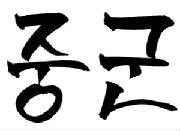
(Pronounced: "Choong-Goon") JOONG-GUN is named after the patriot Ahn Joong-Gun who assassinated Hiro-Bumi Ito, the first Japanese governor-general of Korea, known as the man who played the leading part in the Korea-Japan merger. There are 32 movements in this pattern to represent Mr. Ahn's age when he was executed in a Lui-Shung prison (1910).
Movements: 32 Belt: Blue Belt (4th Kup) Toi-Gye Tul

(Pronounced: "Tie-Gee") TOI-GYE is the pen name of the noted scholar Yi Hwang (16th century), an authority on neo Confucianism. The 37 movements of the pattern refer to his birthplace on 37 latitude, the diagram represents " scholar".
Movements: 37 Belt: Blue Belt with Red stripe (3rd Kup) Hwa-Rang Tul

(Pronounced: "Wha Rang") HWA-RANG is named after the Hwa-Rang youth group, which originated in the Silla Dynasty in the early 7th century. The 29 movements refer to the 29th Infantry Division, where Taekwon-Do developed into maturity.
Movements: 29 Belt: Red Belt (2nd Kup) Choong-Moo Tul
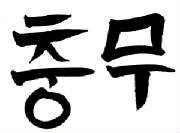
(Pronounced: "Chung Moo") CHOONG-MOO was the name given to the great Admiral Yi Soon-Sin of the Lee Dynasty. He was reputed to have invented the first armoured battleship (Kobukson) in 1592, which is said to be the precursor of the present day submarine. The reason why this pattern ends with a left hand attack is to symbolize his regrettable death, having no chance to show his unrestrained potentiality checked by the forced reservation of his loyalty to the king.
Movements: 30 Belt: Red Belt with Black stripe (1st Kup) Kwang-Gae Tul

Pronounced: "Kwong - Gaye") Named after the famous Gwang-Gae-Toh-Wang, the 19th king of the Koguryo Dynasty, who regained all the lost territories including the greater part of Manchuria. The diagram represents the expansion and recovery of lost territory. The 39 movements refer to the first two figures of 391 A.D., the year he came to the throne.
Movements: 39 Belt: Black Belt 1st Dan |
Sa bum DavisA 4th Dan Black Belt Instructor with additional experience in songahm taekwondo, hapkido and chon-tu kwan Hapkido, Mr. Davis has over 15 years of martial arts experience. He has in depth knowledge in weapons training including escrima, jang bong, chuck and western sword fighting, including fencing and has gained extensive knowledge in eastern sword fighting techniques. He continues his training in hapkido, Chang-Hon TaeKwondo, and weapons.
"I have enjoyed my various careers, but nothing compares to my life as instructor. Teaching and helping bring the benefits of not only marital arts but the ITF style as taught by General Choi Hong Hi to the students lives I touch brings me a great deal of joy. Every day is exciting, challenging and incredibly rewarding. I am lucky to have this opportunity to instruct and serve students." Black Belt Certifications
Fourth Dan
First Dan
Second Dan
Third Dan
| ||||||






